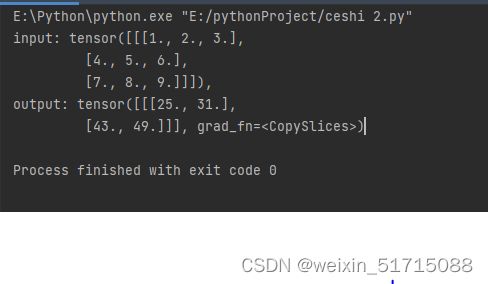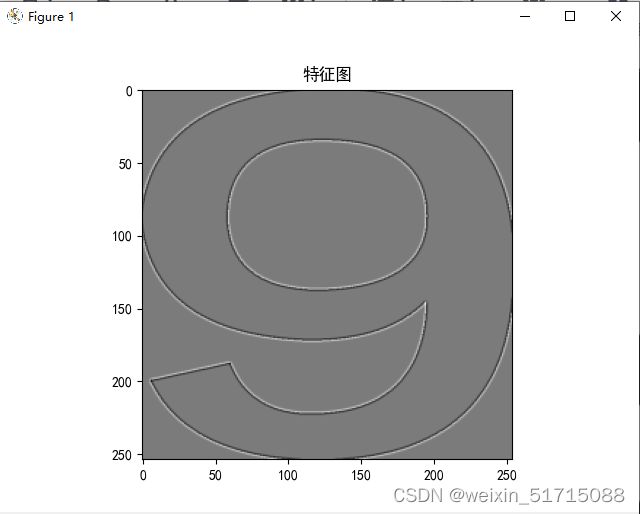NNDL 实验六 卷积神经网络(1)卷积
卷积神经网络(Convolutional Neural Network,CNN)
受生物学上感受野机制的启发而提出。
一般是由卷积层、汇聚层和全连接层交叉堆叠而成的前馈神经网络
有三个结构上的特性:局部连接、权重共享、汇聚。
具有一定程度上的平移、缩放和旋转不变性。
和前馈神经网络相比,卷积神经网络的参数更少。
主要应用在图像和视频分析的任务上,其准确率一般也远远超出了其他的神经网络模型。
近年来卷积神经网络也广泛地应用到自然语言处理、推荐系统等领域。
5.1 卷积
5.1.1 二维卷积运算
5.1.2 二维卷积算子
在本书后面的实现中,算子都继承torch.nn.Layer,并使用支持反向传播的进行实现,这样我们就可以不用手工写backword()的代码实现。
import torch
import torch.nn as nn
class Conv2D(nn.Module):
def __init__(self, kernel_size,
weight_attr=torch.tensor([[0., 1.],[2., 3.]])):
super(Conv2D, self).__init__()
# 使用'paddle.create_parameter'创建卷积核
# 使用'paddle.ParamAttr'进行参数初始化
self.weight = nn.Parameter(weight_attr)
def forward(self, X):
"""
输入:
- X:输入矩阵,shape=[B, M, N],B为样本数量
输出:
- output:输出矩阵
"""
u, v = self.weight.shape
output = torch.zeros([X.shape[0], X.shape[1] - u + 1, X.shape[2] - v + 1])
for i in range(output.shape[1]):
for j in range(output.shape[2]):
output[:, i, j] = torch.sum(X[:, i:i+u, j:j+v]*self.weight, axis=[1,2])
return output
# 随机构造一个二维输入矩阵
torch.seed()
inputs = torch.tensor([[[1.,2.,3.],[4.,5.,6.],[7.,8.,9.]]])
conv2d = Conv2D(kernel_size=2)
outputs = conv2d(inputs)
print("input: {}, \noutput: {}".format(inputs, outputs))
输出结果:
5.1.3 二维卷积的参数量和计算量
随着隐藏层神经元数量的变多以及层数的加深,
使用全连接前馈网络处理图像数据时,参数量会急剧增加。
如果使用卷积进行图像处理,相较于全连接前馈网络,参数量少了非常多。
5.1.4 感受野
5.1.5 卷积的变种
5.1.5.1 步长(Stride)
5.1.6 带步长和零填充的二维卷积算子
从输出结果看出,使用3×3大小卷积,
padding为1,
当stride=1时,模型的输出特征图与输入特征图保持一致;
当stride=2时,模型的输出特征图的宽和高都缩小一倍。
【使用pytorch实现】
class Conv2D(nn.Module):
def __init__(self, kernel_size,stride=1, padding=0,
weight_attr=torch.tensor([[0., 1.],[2., 3.]])):
super(Conv2D, self).__init__()
# 使用'paddle.create_parameter'创建卷积核
# 使用'paddle.ParamAttr'进行参数初始化
self.weight = nn.Parameter(weight_attr)
# 步长
self.stride = stride
# 零填充
self.padding = padding
def forward(self, X):
"""
输入:
- X:输入矩阵,shape=[B, M, N],B为样本数量
输出:
- output:输出矩阵
"""
u, v = self.weight.shape
output = torch.zeros([X.shape[0], X.shape[1] - u + 1, X.shape[2] - v + 1])
for i in range(output.shape[1]):
for j in range(output.shape[2]):
output[:, i, j] = torch.sum(X[:, i:i+u, j:j+v]*self.weight, axis=[1,2])
return output
# 随机构造一个二维输入矩阵
torch.seed()
inputs = torch.tensor([[[1.,2.,3.],[4.,5.,6.],[7.,8.,9.]]])
conv2d = Conv2D(kernel_size=2)
outputs = conv2d(inputs)
print("input: {}, \noutput: {}".format(inputs, outputs))
inputs = torch.randn(size=[2, 8, 8])
conv2d_padding = Conv2D(kernel_size=3, padding=1)
outputs = conv2d_padding(inputs)
print("When kernel_size=3, padding=1 stride=1, input's shape: {}, output's shape: {}".format(inputs.shape, outputs.shape))
conv2d_stride = Conv2D(kernel_size=3, stride=2, padding=1)
outputs = conv2d_stride(inputs)
print("When kernel_size=3, padding=1 stride=2, input's shape: {}, output's shape: {}".format(inputs.shape, outputs.shape))输出结果:
5.1.7 使用卷积运算完成图像边缘检测任务
【使用pytorch实现】
# 可视化结果
plt.figure(figsize=(8, 4))
f = plt.subplot(121)
f.set_title('input image', fontsize=15)
plt.imshow(img)
f = plt.subplot(122)
f.set_title('output feature map', fontsize=15)
plt.imshow(outputs.detach().squeeze(), cmap='gray')
plt.savefig('conv-vis.pdf')
plt.show()从结果可以看出边缘轮廓十分明显, 效果很好。
选做
实现一些传统边缘检测算子,如:Roberts、Prewitt、Sobel、Scharr、Kirsch、Robinson、Laplacian
Roberts:
Prewitt:
Sobel:
(我看了一下大神的csdn,都导入了cv2这个包)
总结:
这次实验我了解了卷积的基本流程以及是否需要填充等问题,是对上次作业的升华。动手处理了图片,充分了解了边缘检测的原理。收获很大。











